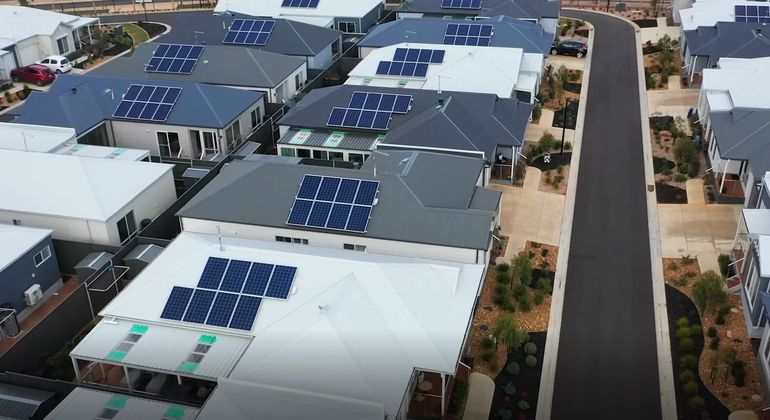Buyers of new retirement living homes in Victoria are likely to soon be able to access savings from green energy sources, as part of major reforms which will impact developers who install and control electricity networks in residential projects.
The Victorian Government has published a review of embedded electricity networks, which is likely to influence State policy responses to this issue around Australia.
Embedded networks are private electricity networks installed by a property developer or community operator which serve multiple customer premises within a building or community.
In Victoria, it’s thought around 131,000 consumers are reliant on 1,500 of these networks across the State, including in retirement villages and over 50s land lease communities.
In these networks, consumers are usually reliant on pricing and services organised by the developer or community operator, rather than being able to choose their own provider.
Embedded networks should ideally lead to consumer savings, through the bulk purchasing of electricity.
However, the Victorian Government’s review found that savings are often not being passed on to consumers, while these consumers also did not have access to the same level of regulatory protections as the general public.
The review has now recommended that, from 1 January 2023, new embedded networks be banned, unless 50 per cent of the power source is coming from on-site renewable energy and the resultant savings are passed on to consumers.
In addition, from the same date, the review has recommended that consumers in existing embedded networks have access to competitive retail offers and other regulatory protections which are the same as, or equivalent to, those available to the general public.
Existing networks will also be required to meet the on-site renewable energy target by 2027.
The Victorian Government will respond to the review by mid-2022.
A Victorian Government spokesperson told Downsizing.com.au: “The Andrews Labor Government set up the Embedded Networks Review as part of an election commitment to ban embedded networks and improve protections for those in existing embedded networks.”
"The review panel recommended a ban on all new embedded networks unless operators can demonstrate that 50 per cent or more of electricity consumption at the site is met by on-site renewable sources, in line with the 2030 Victorian Renewable Energy Target."
"The panel's recommendations apply to all current embedded network customers and future local energy network customers, including people living in retirement villages and residential parks.”
The reforms are likely to make it less attractive for retirement living developers to install embedded electricity networks, and therefore mean it’s more likely homes in future developments will have their own meters and therefore provide the ability for residents to choose their own supplier.
If an embedded network is installed, renewable energy sources such as solar panels will need to be installed up-front, which potentially could increase the price of homes but lead to longer-term electricity savings.
In 2020. the Victorian Government also set a maximum price for electricity sold in embedded networks.
The NSW Government is currently grappling with this issue, particularly after a resident of a north coast residential land lease community was able to successfully argue in court that she had been over-charged for electricity.
It is conducting a review of the State’s residential land lease legislation, which is looking at how to introduce renewable energy supply and better control pricing and service qualiy in existing and new communities.
Some forward-thinking operators are already introducing renewable energy supply into new and existing projects, leading to residents paying no or little for electricity.
Find out more:


